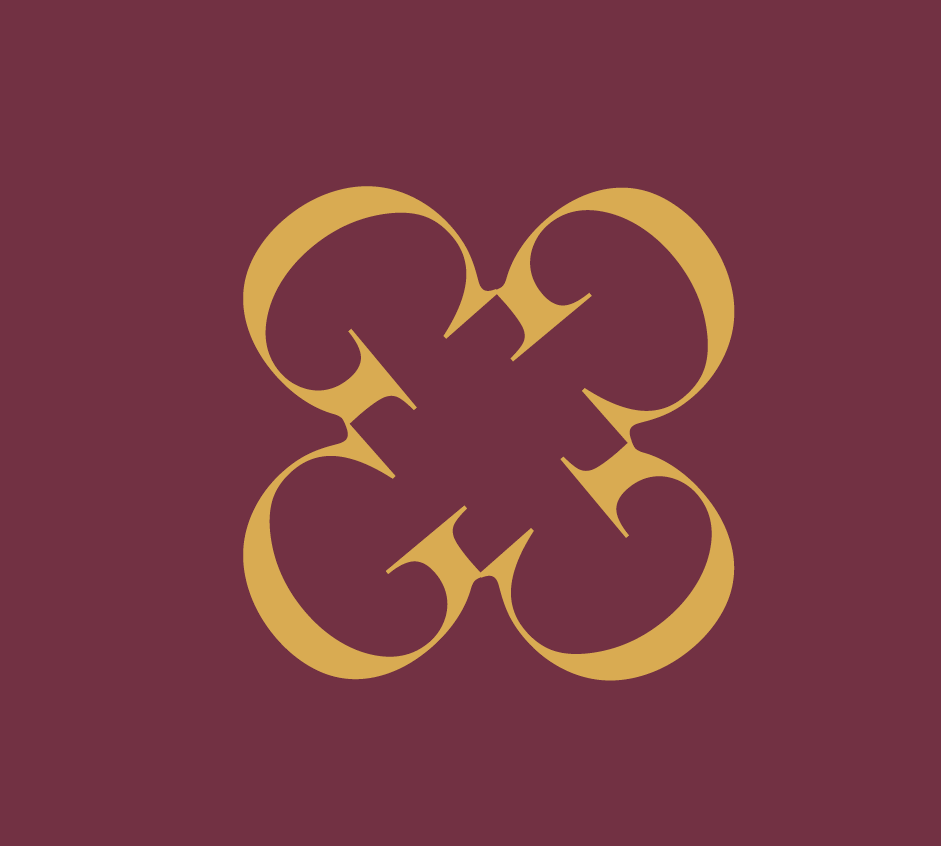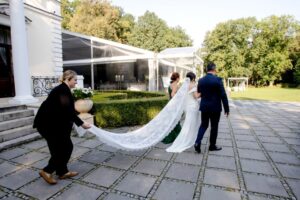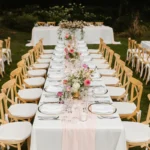
Embark on a journey into the heart of Polish culture with this delightful exploration of traditional Polish weddings. Discover the unique and joyous customs that make the Polish wedding ceremony a dazzling showcase of unity, heritage, and deep-rooted cultural traditions. From the coin showers that bring prosperity to the spirited Wesele party, this article guides you through the enchanting ceremonies, elegant dress, and vibrant festivities that define a traditional Polish wedding. Get ready to be captivated by the charm and warmth of these time-honored traditions.
The essence of Polish wedding traditions
Polish weddings extend beyond a simple exchange of vows; they resonate as vibrant celebrations of love, community, and cultural heritage. Polish wedding customs hold a deep cultural significance and sentimentality, serving as an essential guide for anyone looking to honor Polish heritage while incorporating cherished customs into their special day. Polish wedding ceremonies, in particular, involve the bride and groom stepping into a new life together as wedding guests shower them with coins, wishing them prosperity and a successful marriage. These unique wedding traditions may seem mystifying at first glance, but they are deeply rooted in Polish history and convey the communal spirit of sharing and support.
In Poland, a sunny wedding day symbolizes more than pleasant weather; it is considered a sign of future happiness, while a stormy sky might hint at future trials for the couple. Some say the rainy sky on the wedding day reflects future fertility thus each symbol can be interpreted in a positive way. When it comes to gifts, don’t be surprised to find guests presenting enveloped money, a heartfelt gesture that underscores the importance of financial well-being in Polish culture. Furthermore, Polish weddings are renowned for their longevity, with celebrations often lasting until the late morning hours, a testament to the genuine festivity and enjoyment that sets them apart from other cultures.
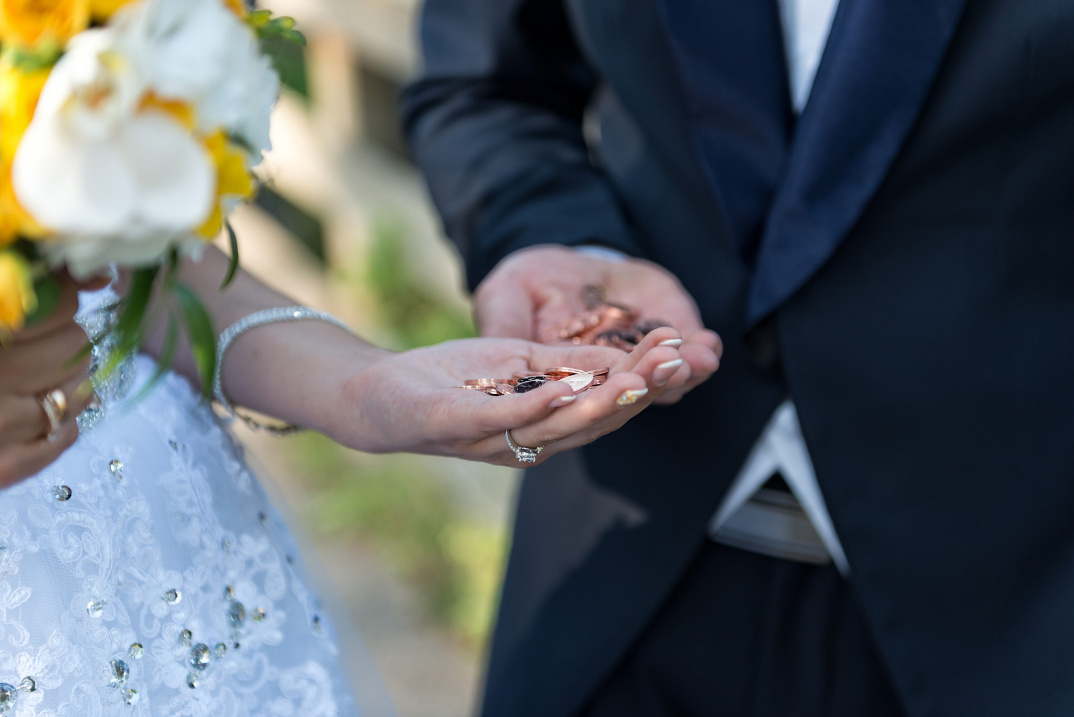
Uniting Families: Zmówiny
In some parts of Poland before the wedding bells chime, families unite in the traditional pre-wedding gathering known as “Zmówiny”. This is where the parents of the bride and groom meet, often for the first time, to lay the foundation for their children’s future. Zmówiny, a term still used today, harks back to a time when detailed plans and agreements were discussed, cementing family bonds and setting the stage for the upcoming nuptials.
This serves as a touching reminder that in Polish tradition, marriage signifies not only the union of two individuals but also the harmonious fusion of two families.
Polish wedding attire: Elegance and tradition
The Polish wedding dress is a masterpiece of elegance, often a stunning white or ivory gown that symbolizes purity and innocence. The classic ball gown silhouette, with its full skirt and fitted bodice, is a common sight that graces the aisle. Complementing this vision of bridal beauty, the groom stands in his own right as a figure of distinction. He is traditionally attired in an elegant black suit, meticulously tailored to fit with precision. The suit is often accessorized with a waistcoat, a crisp white shirt, and sometimes a touch of color in the tie or boutonniere to match the wedding’s theme.
Despite fashion being a highlight, modesty is upheld during the church ceremony. Both bridal couples and guests don attire that respects the sanctity of the occasion, with longer hem lengths and shoulders discreetly covered.
Parents blessings “Błogosławieństwo”
Before the church doors open for the ceremony, a pivotal moment unfolds at the bride’s home. It is here, in the presence of family, that the bride and groom see each other for the first time on their wedding day, a moment charged with emotion and anticipation. In this intimate setting, the parents offer their blessings to the couple, bestowing upon them the holy cross to kiss, symbolizing their approval and support. This sacred act is not only a blessing, but also a testament to the deep-rooted faith and love within the family. With hearts full and spirits high, they then proceed to the church together, ready to begin their journey as a married couple.
The church ceremony
At the heart of a Polish wedding is the wedding ceremony, particularly the church ceremony, a poignant rite infused with the country’s Catholic heritage. Here, amidst the reverent ambiance of the church, with its luminous stained-glass casting a kaleidoscope of colors, the bride, and groom exchange their sacred vows. These promises echo the enduring customs of generations before them, as they commit to a shared life of love and fidelity within the solemn traditions of a Polish matrimonial service.

The Wesele: A celebration of love and life
Though the church bells may cease to ring, the jubilation is just beginning to unfold. Many Polish wedding receptions start with the newly-weds arriving at the venue where the Wesele will take place. They are greeted with the traditional offerings of bread and salt, symbolizing their wishes for never knowing hunger and learning to cope with life’s difficulties, and a dual toast with vodka and water. This ritual is steeped in symbolism; the one who selects the vodka is said to take the lead in the marriage, while the one who chooses water is deemed the more accommodating partner. With a decisive swig, their roles are playfully foretold. Then, in a gesture that augurs happiness and longevity, they cast the glasses over their shoulders, the clinking and shattering of glass echoing promises of a prosperous future together.
The groom, in a display of gallantry, lifts his bride in his arms and carries her through the doors, marking their official entrance as a married couple. Following this grand entrance, the guests queue to offer their heartfelt congratulations and well-wishes, enveloping the couple in a sea of blessings and good cheer.
The delights of Polish wedding cuisine
Polish weddings offer a culinary journey that tantalizes the senses and pays tribute to the country’s rich gastronomic heritage. The highlight of the celebration is the delicious and beautifully decorated Polish wedding cake, adding a sweet touch to the festivities. As the courses unfold, the table brims with an array of dishes like pierogi, schabowy, and bigos, the quintessential meaty stew, each more delicious than the last, ensuring that there will be more eating and delight as the celebration continues. The wedding meal is an elaborate affair, a sit-down dinner that takes guests on a journey through Poland’s culinary traditions, with each bite a testament to the country’s rich culinary landscape.
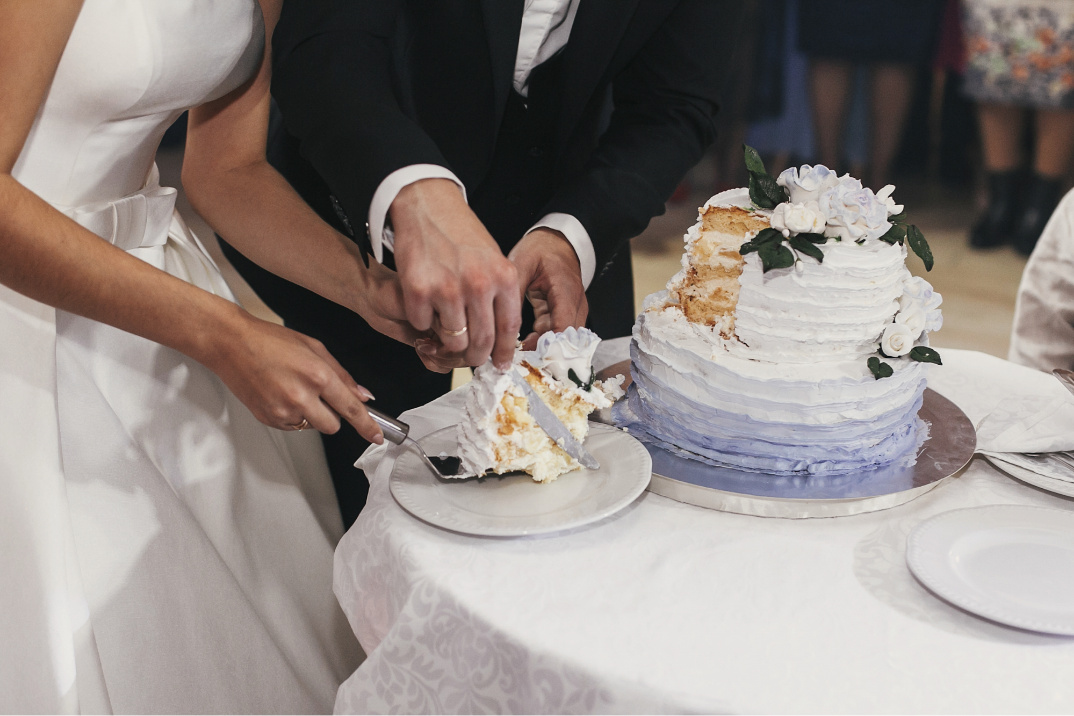
Polish wedding cake: A symbol of sweet unity
Polish wedding cake is also important and quite akin to Western customs. It often features multiple tiers, symbolizing the layers of life the couple will share. The number of layers can be as many as the bride and groom desire, each one representing a layer of their future together. In a cherished tradition, the bride and groom make the first cut together, a gesture that signifies their partnership and mutual support. They then feed each other the first slices, in a tender exchange that marks their commitment to provide for one another. Only after this intimate moment do they turn to share the cake with their guests, extending the sweetness of their union to family and friends.
Traditional Polish wedding is nothing without music, games and Oczepiny ceremony
The rhythm of traditional Polish music, played by live bands, sets the stage for the Wesele, the wedding reception that is a testament to Poland’s rich cultural heritage. The dance floor comes alive as guests of all ages step in tune to melodies that have resonated through Poland’s history. It’s a heart-warming scene as people from every generation share a dance with the bride, honouring her new journey into married life. The festivities also include the iconic Polish apron dance, which adds a playful element to the celebration.
Children find their own joy in the festivities, often taking centre stage with dance moves to the cheerful tunes of ‘Kaczuszki’ and ‘Jedzie pociąg z daleka.’ Their laughter and energy infuse the party with innocence and delight. As the night progresses, adults partake in the Oczepiny ceremony, a tradition steeped in symbolism and anticipation. The bride stands ready, her veil clutched in hand, while the groom grips his neck tie. With a shared look of excitement, they toss these symbols of matrimony into the air—her veil towards the unmarried women, his tie to the bachelors. The crowd watches eagerly and the lucky catchers are said to be next in line for wedded bliss. This playful tradition injects a moment of fun into the celebration, as everyone cheers for the potential future brides and grooms among them.
Poprawiny – Extending the celebration
Polish wedding party continues beyond the Wesele, extending into post-wedding traditions that uphold the celebratory spirit. The Poprawiny serves as a laid-back event, an opportunity for guests to savour the leftover delicacies from the wedding feast and raise their glasses in continued celebration. This tradition underscores the importance of community and connection, providing the newly-weds with precious moments to mingle and share personal time with their guests, as the atmosphere remains jubilant, filled with eating, drinking, and continuing merriment.
Traditional Polish weddings – Conclusion
Polish wedding traditions stand as a unique tapestry of cultural magnificence, weaving together the sacred and the celebratory into a matrimonial experience. From the vows of the Ślub to the joy of the Wesele, and the fun of the Poprawiny, these customs are steeped in a heritage that is distinctly Polish. They are a vibrant testament to the singular beauty of Poland’s cultural identity, leaving an unforgettable impression on everyone who partakes in these celebrations. Each tradition, from the sharing of bread and salt to the lively festivities that keep guests on their feet, is a chapter in the story of a people deeply proud of their roots. These wedding customs, exclusive to the Polish ethos, are cherished gems that continue to shine through the ages, enchanting all with their authenticity and charm.

